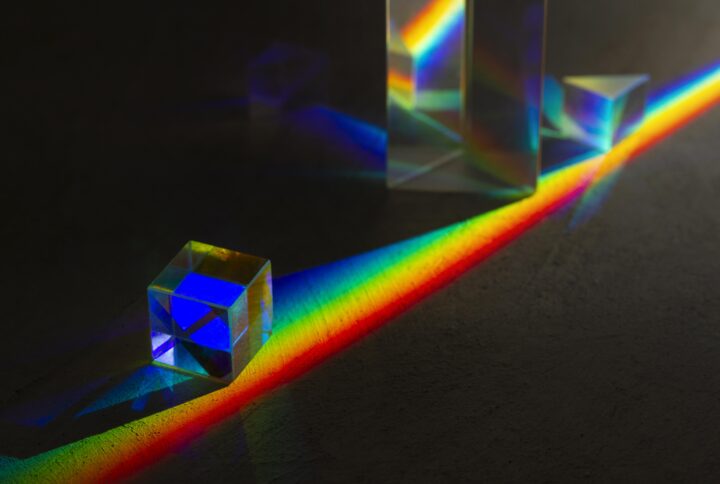The definition of Spectroscopy
Spectroscopy is a fundamental analytical technique used in scientific research and chemical analysis. The method from spectroscopy provides valuable insights into the composition, structure, and properties of substances by studying the interaction between matter and electromagnetic radiation. It helps identify and quantify materials based on how they mainly absorb, emit, or scatter a form of light.
There are several basic principles to know in spectroscopy or infrared spectroscopy, such as measuring and analysing wide groups of wavelengths, which scientists can use to determine the composition and structure of specific substances. How the technique is approached is essential for a variety of applications, like identifying compounds that are unknown, to studying defined molecular dynamics and electronic states.
Different types of Spectroscopy
There is a range of different types of spectroscopy, from:
Absorption Spectroscopy
Commonly used to identify the quantity of substances in a sample and measure the amount of light absorbed by a particular sample of wavelengths. Alternatively, it can be used to measure the absorption of light by spraying a solution into a flame.
Emission Spectroscopy
The light emitted by the substance is specifically studied and helps analyse the energy within atoms and molecules.
Mass Spectroscopy
Not a traditional form of spectroscopy, it’s a chemical compound that’s ionised to measure its mass-to-charge ratio. The mass method is widely used for identifying and quantifying molecules in complex mixtures, like potassium bromide, which is a mass application used in professional science labs.
Two types of advanced Spectroscopy:
Infrared Spectroscopy
One of the most advanced methods, known as IR, based on infrared light, is used to study molecules and vibrations, with the ability to identify functional groups to analyse organic compounds. Infrared spectroscopy can provide detailed information about molecular structure, bonding, and chemical environments. Products like mass Potassium Bromide, as advanced substances, are part of the spectroscopy and spectrometry method that is used.
Raman Spectroscopy
Measures the scattering of light by molecules and provides information for IR spectroscopy. It’s specifically non-destructive and can be used to study a range of materials, including samples, polymers, and nanomaterials.
Magnetic Forms of Spectroscopy
Nuclear Magnetic Resonance (NMR) Spectroscopy
NMR Spectroscopy studies the interaction of atomic nuclei through the use of magnetic fields. Provides detailed information about sampled molecular structure, dynamics, and the environment. Organic chemistry is where nuclear magnetic spectroscopy is used, including biochemistry and material science.
X-Ray Spectroscopy
A specific method using X-rays to probe certain materials from the electronic structure and chemical composition. X-ray diffraction (XRD) and X-ray fluorescence (XRF) to study elemental composition and crystalline structures. These methods are essential for analysis, science, and environmental studies.
Emission Spectra and Emission Spectrum
Emission spectroscopy, including techniques like atomic emission spectroscopy and inductively coupled plasma spectroscopy, studies the light emitted by specific atoms and molecules. These methods are used for elemental analysis, detecting elements that are traced, and studying high-temperature processes. Compared to, Emission spectra provide valuable information and data about atoms and molecules within energy levels and transitions.
What they are used for in science labs
The five types of spectroscopy are used variously in labs. The absorption method is used to measure the absorption of light by spraying a solution into a flame, where emission spectroscopy is employed to analyse various materials, such as rocks, water, soil, and biological specimens. Mass spectroscopy is used in labs to measure the mass-to-charge ratio of ions, providing a unique, one-of-a-kind fingerprint of molecules. Advanced infrared spectroscopy in labs identifies molecules and determines their structure, and analyses how they absorb the infrared radiation. Advanced Raman spectroscopy is used in science labs and the industry, specifically where it is characterised, analysed, and identified, but cannot be accomplished with other techniques.
How is Spectroscopy used?
Spectroscopy is used by analysing the interaction between matter and electromagnetic radiation, providing substance information like composition, structure, and properties. Instruments used in spectroscopy are one way to measure and analyse the interaction between light and matter. Spectrometers, spectrophotometers, and spectrographs are three types of instruments used to gather results and information within spectroscopy. These instruments perform differently to gather data. To get specific research and analysis, the instruments provide accurate data that is precise, including wavelengths from the ultraviolet to the infrared region, which are essential. Accurate measures are taken for identifying substances along with their quantity, but each wavelength is associated with a different substance.
A spectrometer measures the properties of light over a specific portion of the electromagnetic spectrum. It is used to analyse light’s spectral content and identify substances’ composition. A spectrophotometer measures light intensity as a wavelength function. It is commonly used for quantitative analysis of samples by measuring absorbance and transmittance. Spectrographs measure the spectra by capturing emitted light, scattered by a sample. They are used in various applications, including astronomy and material science, to obtain detailed spectral data. The way spectroscopy is used through four main methods of analysis, like chemical products, potassium bromide, medical, and astronomy, but holds other applications, like analyses of food, forensic, materials, and environmental analysis.
Discover the power of spectroscopy with Techmate today, and take your lab’s analysis to the next level with tools built for accurate, consistent results. Reach out now to find the right solution for your research needs.

